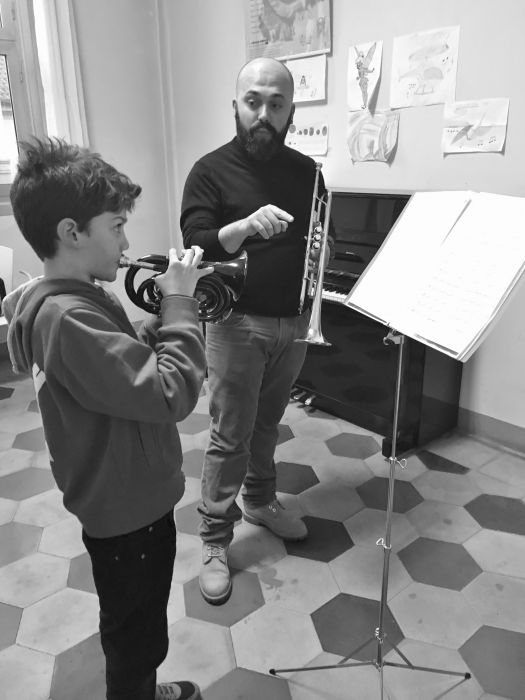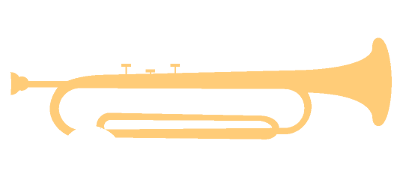Trumpet Lessons
For children and adults...

Starting from the assumption that there is no “right” age to start playing a musical instrument, I believe that teaching mainly consists in trying to understand what are the peculiarities of each pupil and his/her expectations, so as to be able to help him/her get the maximum outcome for his/her abilities. Giving correct suggestions according to the person we are dealing with is paramount (without falling on pre-set models), trying to search for the right strategy for each and every pupil in a particular moment of his/her education: if we can transmit the right image to understand such a strategy, he/she will also develop the ability self-belief and self-esteem.
From a technical perspective, timbre quality, intonation, range and endurance are the direct consequence of a correct setup. To this purpose, I think that the so-called “classical setup” can help the student orientate towards a wideer range of repertories, according to his/her preferences.
A recurring issue is the difficulty in reaching a full awareness and the correct use of one’s own body: first of all air management, but without neglecting the control of the tensions of muscles that activate during sound production and that risk to prejudice its quality if they show up in excess.
Pupils who start “from scratch” should be guided towards as natural an approach to the instrument as possible, which can guarantee getting better results in a shorter time. The body works on muscle memories: it is therefore particularly important to set from the beginning a muscular model with no useless and counterproductive forcings.
In case we need to work with a pupil who has already developed inadequate postures and behaviours, we should help him/her gradually change these habits, suggesting a new model, that is new instructions to give to his/her own body to replace the older ones.
As a matter of fact, when we start playing a musical instrument, (just like in every innovative experience), we tend to learn the instructions we are given very quickly, turning these concepts in specific phisicality models that are often unnatural and little spontaneous: this can start a physiological mechainism that in the beginning doesn’t seem to create particular negative issues, but in time will cause musculare deficits that can heavily impact sound quality, sound production and the effectivenes of the global musical output.
Playing a wind instrument cannot be defined as a really “natural” body activity, but without any doubts the main goal of a musician should be reaching the point of maximum balance and psycho-physical well-being during musical praxis.
